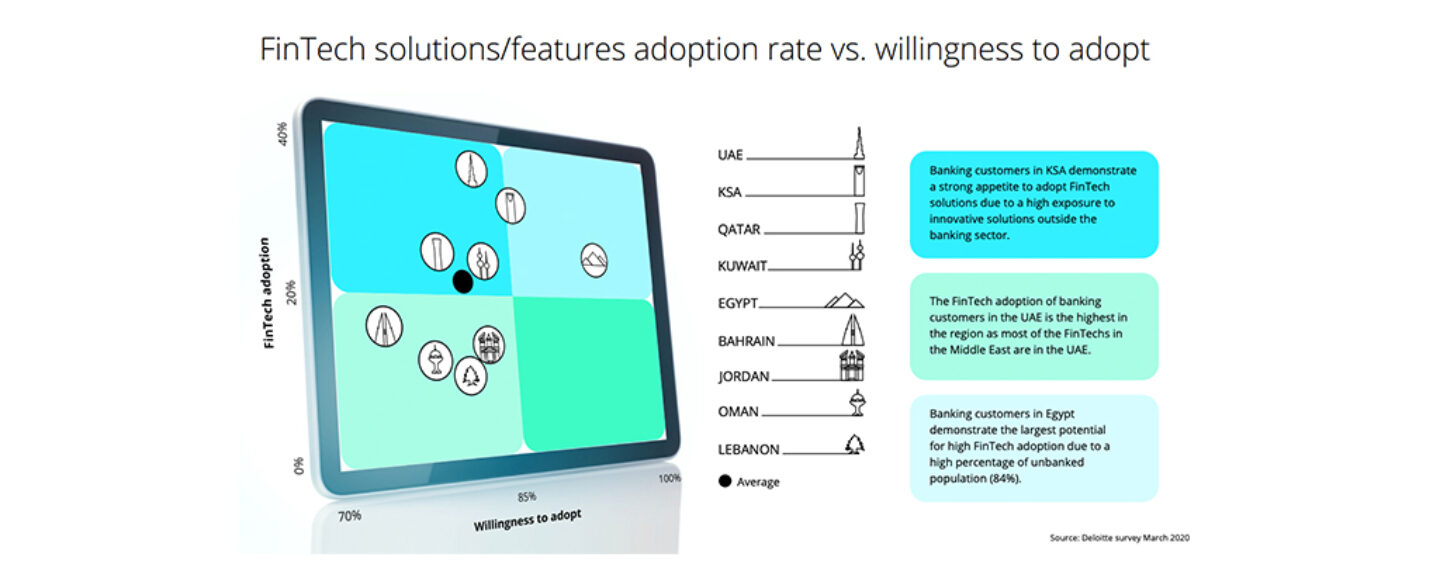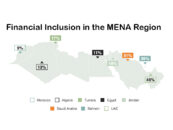In the Middle East, despite customers’ willingness to adopt innovative fintech solutions, banks are still reluctant in integrating fintechs into their strategy, with most choosing to follow a “wait and see” approach, according to a new report by Deloitte.
In its Middle East Fintech Study, released in June, the consultancy firm takes a look at the state of fintech adoption in the Middle East, analyzes the region’s industry and points out to the different challenges that’s been hindering the growth of the sector.
Customers warming up to fintech
As part of the study, Deloitte gathered a set of insights from 1,500 banking customers and more than 50 digital leaders in the region, and found that a staggering 82% of banking customers in the region were willing to start using fintech solutions.
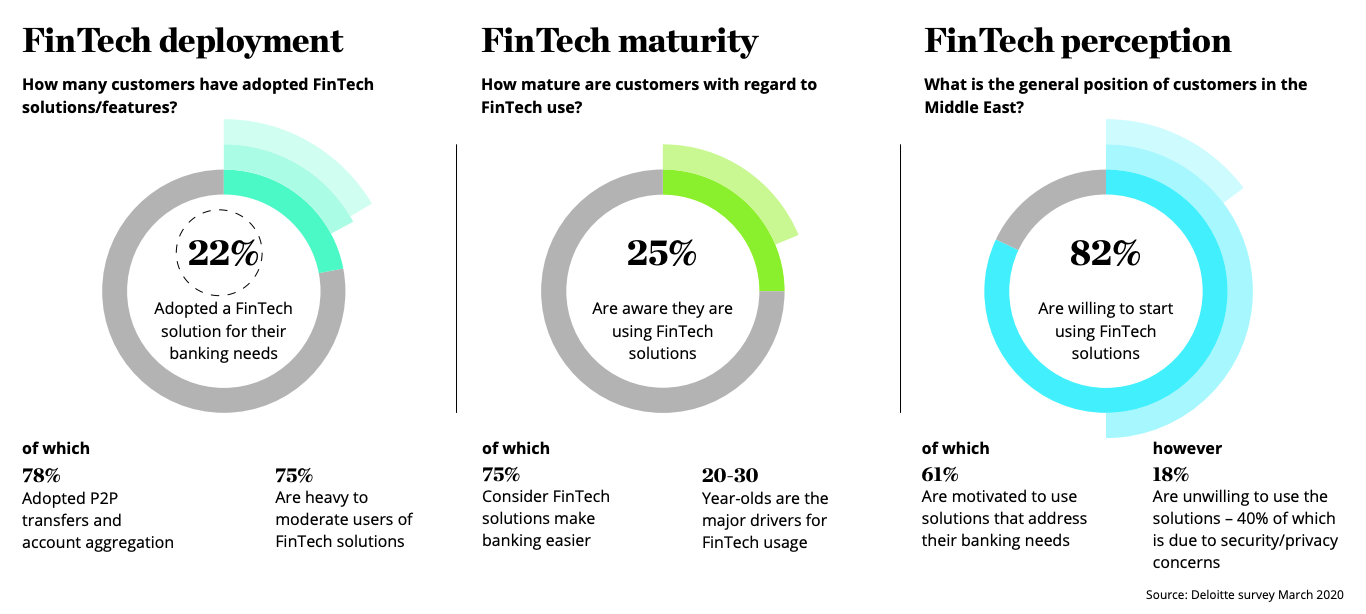
Middle East banking customers’ perceptions of fintech solutions:features, Source: Deloitte survey March 2020
Among the main drivers, these customers said they believed fintech solutions could effectively support their needs (61%), provide personalized services (53%), and offer a quicker and smoother customer experience (40%).
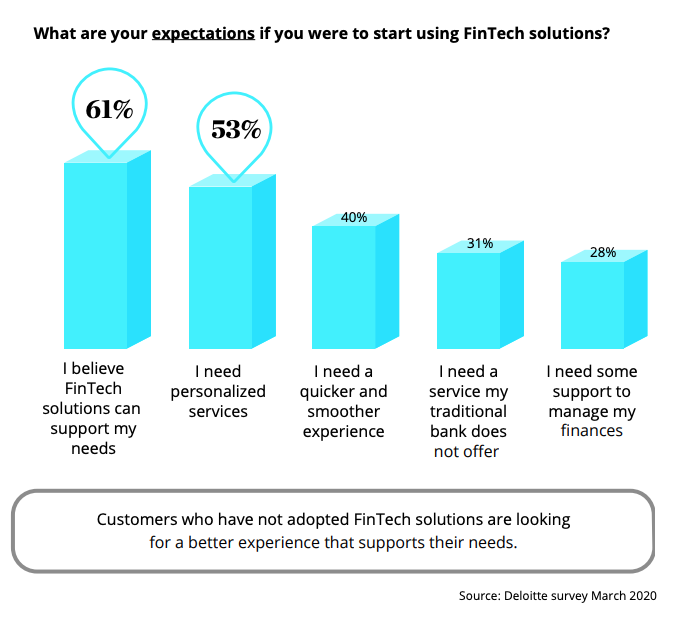
Middle East banking customers’ expectations when opting for a fintech solution, Source: Deloitte survey March 2020
In terms of actual adoption, the study found that 22% of customers had used at least one fintech solution for their banking needs in the past. When asked about the main reasons why they used fintech solutions, these banking customers cited easier banking (75%), faster transactions (45%), and better user experience (41%).
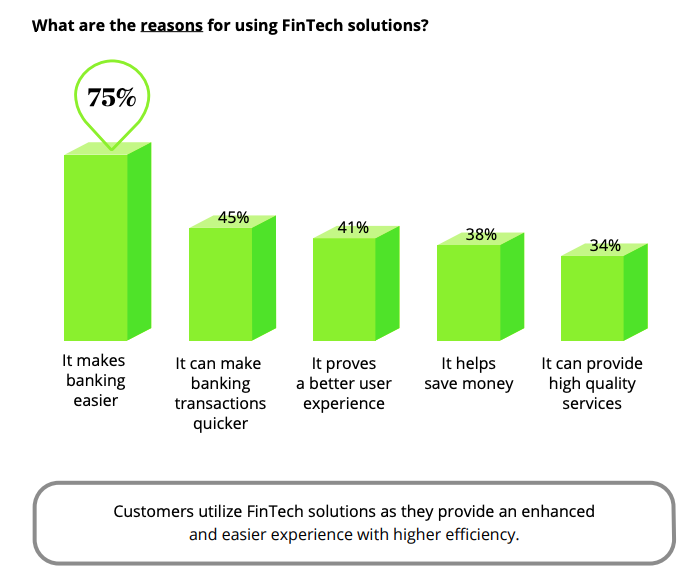
Reasons why Middle East banking customers use a fintech solution, Source: Deloitte survey March 2020
Peer-to-peer (P2P) money transfers (39%) and account aggregation (39%) were found to be the two most popular fintech solutions/features.
In Lebanon, Bahrain and Jordan, P2P money transfer solutions are widely adopted, the research found, but in Saudi Arabia, the United Arab Emirates (UAE), and Oman, usage is still low.
Meanwhile, account aggregation solutions are highly used within more advanced banking markets including Saudi Arabia, the UAE and Egypt, while less advanced countries such as Kuwait are recording the lowest rates.
Besides P2P money transfer and account aggregation, other popular fintech solutions and features in the Middle East include robo-advice (19%), connected auto insurance (19%) and connected health (15%).
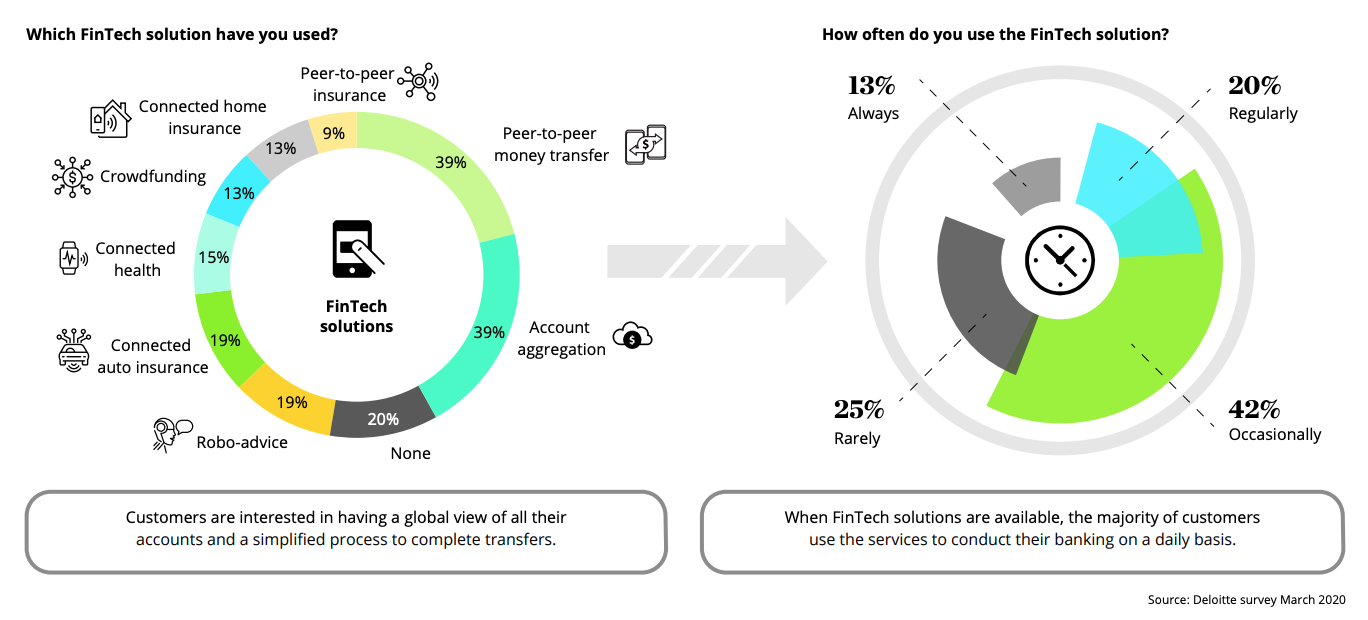
Popular fintech solutions/features according to banking customers in the Middle East, Source: Deloitte survey March 2020
Breaking down the region’s different countries, the research found that fintech adoption was the highest in the UAE since the country has the largest concentration of fintech companies across the region. Appetite to adopt fintech solutions was the highest in Saudi Arabia because banking customers there were the most exposed to innovative solutions outside the banking sector. And Egypt was found to have the largest potential for fintech adoption given the country’s large population of unbanked.
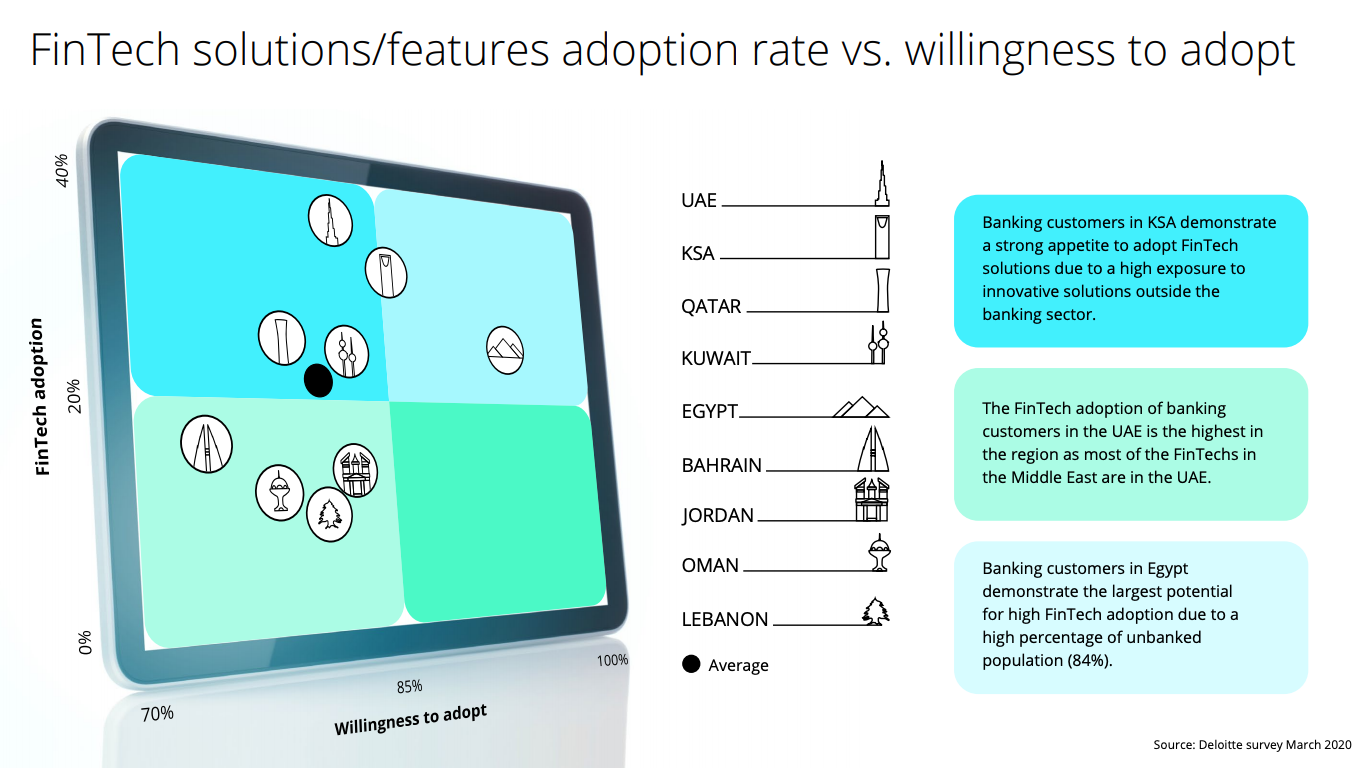
Fintech solutions/features adoption rate vs. willingness to adopt, Source: Deloitte survey March 2020
Slow in embracing fintech
Despite customers’ willingness to adopt innovative, digital solutions, banks in the region have been slow in embracing fintech and have failed to leverage the full suite of fintech solutions to address their customers’ needs and requirements.
The research found that although Middle Eastern banks did perceive fintechs as enablers, they remained hesitant in forming partnerships with them and were still trying figuring out how to best cooperate with fintechs and where to deploy the solutions.
Overall, the study found that banks in the Middle East tended to adopt one of the following two strategies when it comes to fintech: either building in-house fintech-like capabilities, or following a “wait and see” approach with an aim to become fast followers once the “fintech dust” has settled.
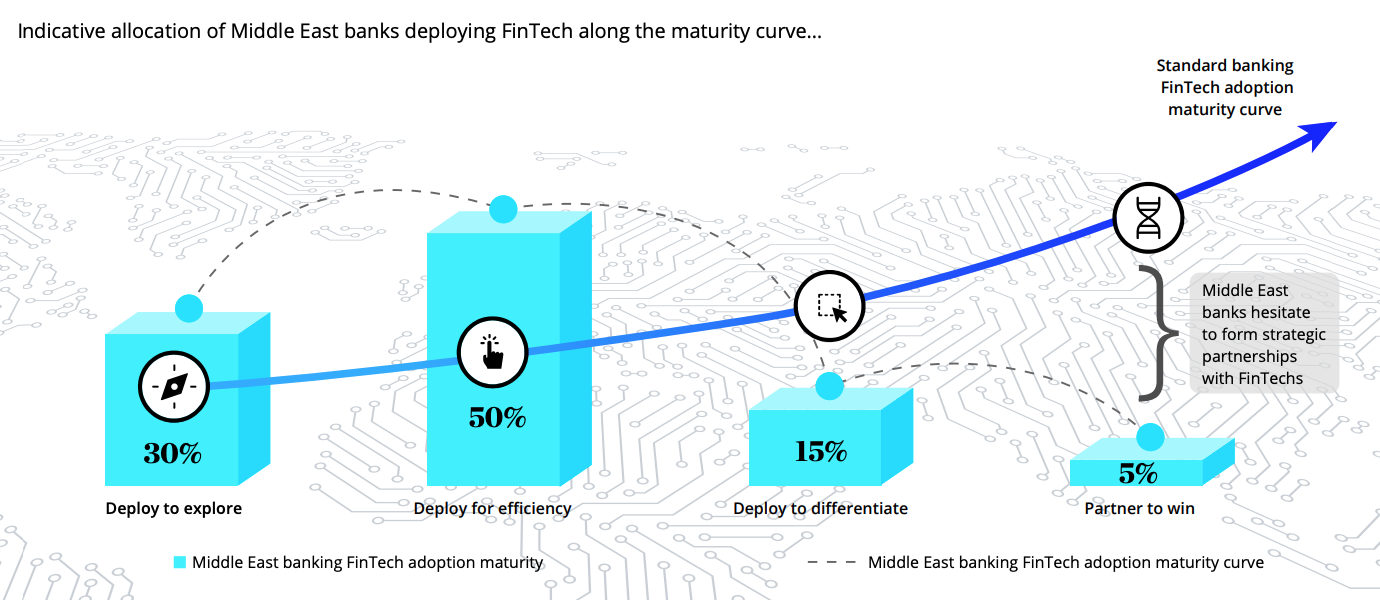
Middle East banking fintech adoption maturity vs. standard banking fintech adoption maturity, Source: Deloitte Middle East Fintech Study, June 2020
But banks’ slow adoption of fintech innovation isn’t the only challenge that’s been hampering the growth of fintech in the Middle East. The report notes that while the sector has evolved rapidly over the past few years, it is still struggling to attract the financing needed to boost its footprint and impact.
According to the study, the Middle East now only represents about 1% of global fintech financing (US$45 billion), implying that there is still plenty of opportunities to tap into in the region.



